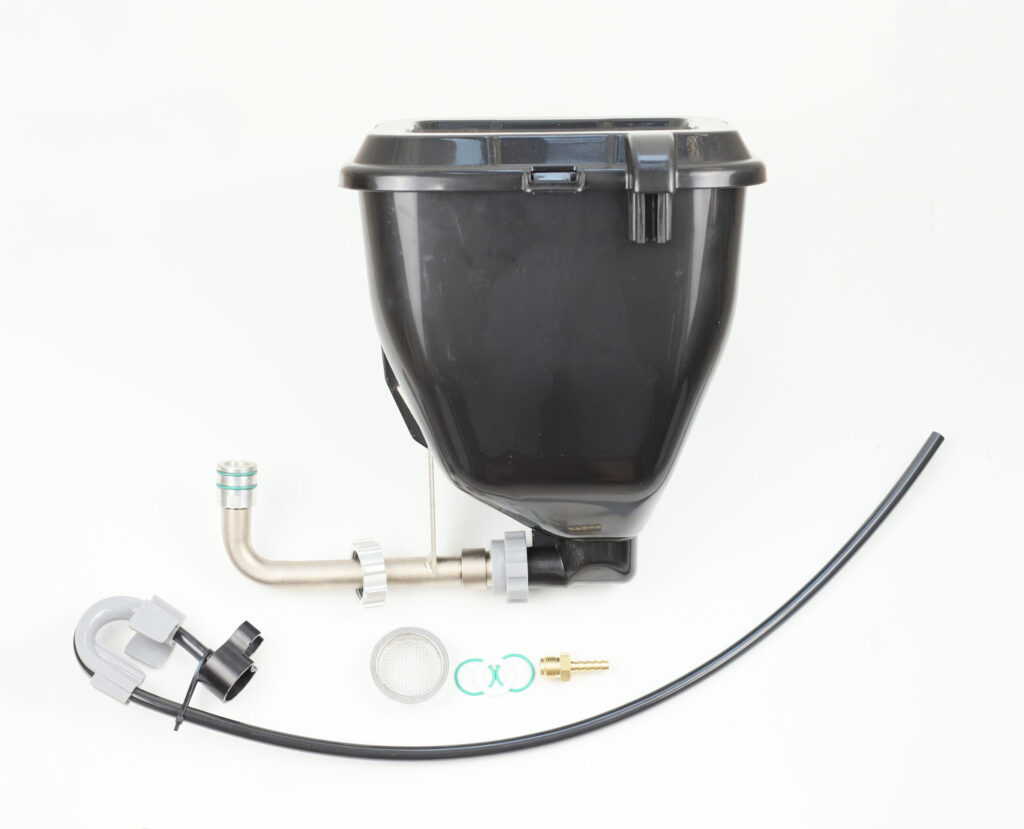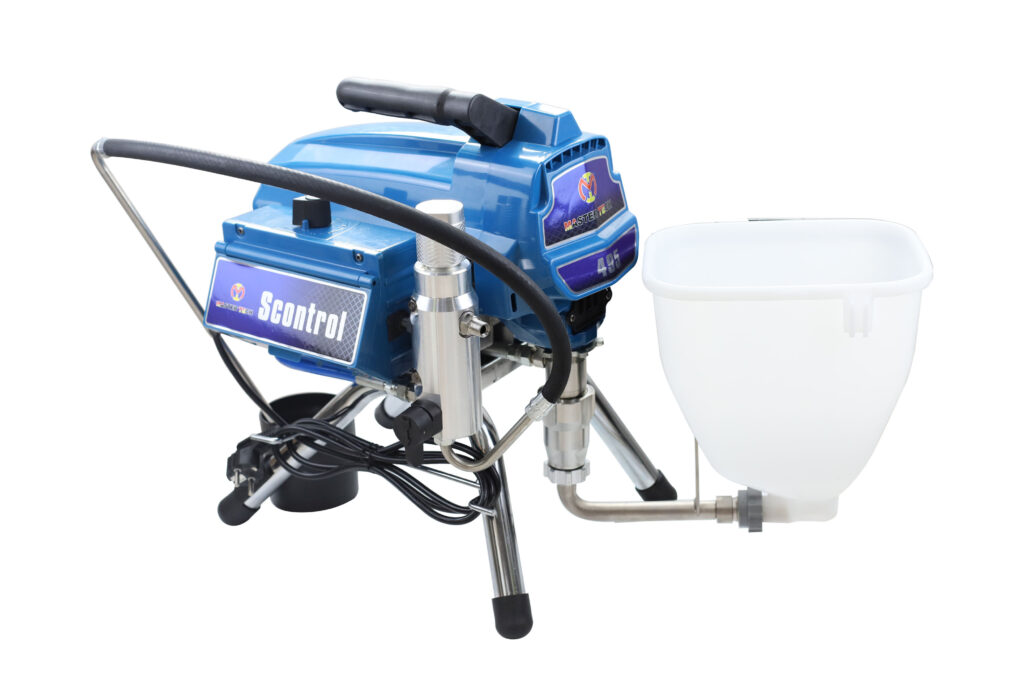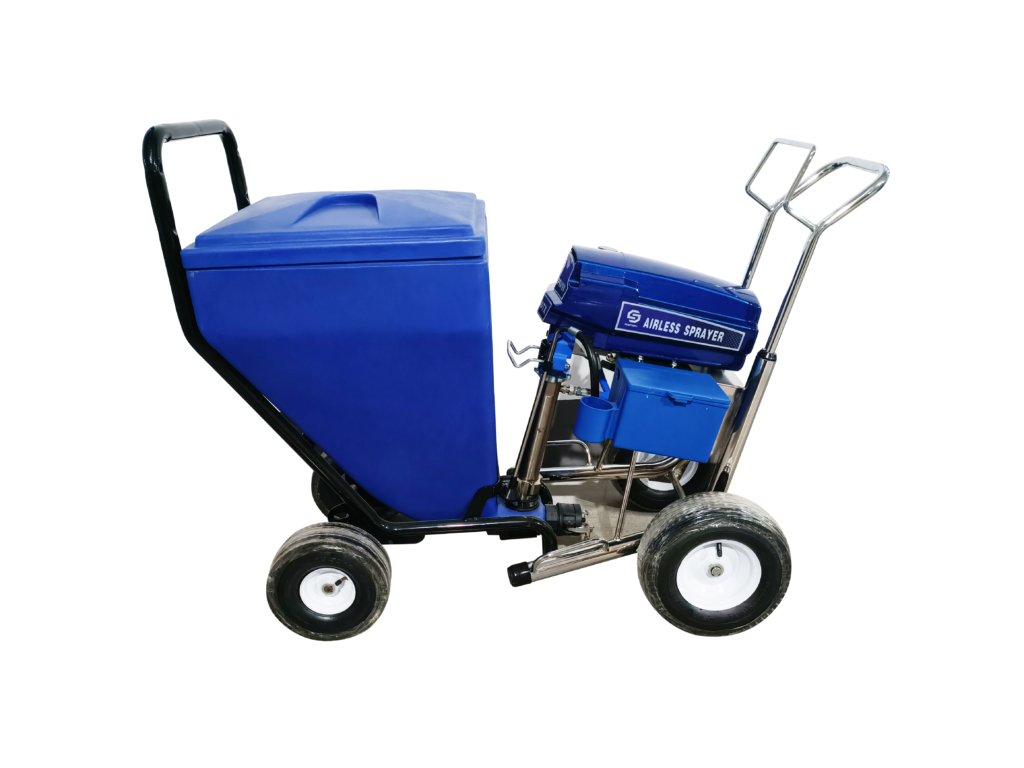In the high-pressure airless painting process, bubbles can result in uneven coating surfaces, affecting the final finish of the paint. The formation of bubbles can be caused by various factors, such as paint viscosity, air entrainment, improper spray pressure, or equipment misconfiguration. To resolve these issues, the following adjustments can help reduce the occurrence of bubbles.

1. Adjust the Paint Viscosity
High or low paint viscosity is one of the common causes of bubbles during spraying. High viscosity makes it difficult for the paint to spread evenly, trapping air and forming bubbles. In this case, adding an appropriate amount of thinner can lower the viscosity. Additionally, choosing the right temperature conditions for spraying is important, as excessively cold or hot paint can affect its flowability, increasing the risk of bubbles. When using China airless paint sprayers or Graco airless sprayer parts, ensure that the paint viscosity is well-suited to the equipment’s settings.
2. Prevent Air Entrainment
Air can easily enter the paint during mixing or stirring if not handled properly. When this air gets compressed during spraying, it forms bubbles on the paint surface. To avoid this, use low-speed stirring and avoid prolonged or aggressive mixing. Ensure that the paint container is well-sealed to prevent air from entering during the process. Whether using a SCENTURY airless paint sprayer or Graco pump repair parts, proper mixing and storage of paint are essential.
3. Adjust the Spray Pressure
The spray pressure settings significantly affect bubble formation. Excessive pressure can cause over-atomization of the paint, making it easier for air to become trapped in the coating. Conversely, low pressure may lead to uneven spraying, where bubbles don’t burst quickly enough. When using Graco airless sprayers or China made Graco pump parts, ensure you set the correct pressure according to the paint characteristics and the working environment to avoid bubble issues.

4. Maintain and Clean Equipment
Wear or blockage inside the equipment is another potential cause of bubbles. If the nozzle or filter is clogged, it can cause irregular paint flow during spraying, leading to bubble formation. Regular inspection of the equipment, especially the nozzle, pump, and filter, is crucial to ensure proper function. Cleaning the Graco pump repair parts or other airless sprayer components, like China made Graco pump parts, after each use will help prevent dried paint or debris from affecting future spray jobs.
5. Choose the Right Spraying Environment
Environmental factors also influence the outcome of the spray painting process. Spraying in high temperatures, low humidity, or strong winds can cause the solvent in the paint to evaporate too quickly, making bubbles harder to dissipate. Ensure that the working environment has suitable temperature and humidity levels, and try to spray in a well-ventilated indoor area or an outdoor space without wind. China airless paint sprayers or Graco airless sprayer parts will perform optimally in controlled conditions, reducing the chances of bubbles forming.
6. Use Anti-Foaming Agents
Anti-foaming agents are chemical additives specifically designed to reduce or eliminate bubbles in paint. If bubble formation is a persistent issue, you can add a small amount of anti-foaming agent to the paint to help bubbles break quickly during spraying. However, be cautious with the amount used, as it may affect the overall performance of the paint. Whether using a SCENTURY airless paint sprayer or Graco airless sprayer parts, anti-foaming agents can provide a smoother coating finish.

Conclusion
Bubbles during the spray painting process can be effectively addressed by adjusting paint viscosity, preventing air entrainment, fine-tuning spray pressure, and maintaining equipment. In addition, selecting the right spraying environment and using anti-foaming agents are essential techniques to minimize bubbles. By following these methods, whether using China airless paint sprayers or Graco airless sprayer parts, you can achieve a smoother, more consistent coating finish and improve the overall quality of your spray painting work.
